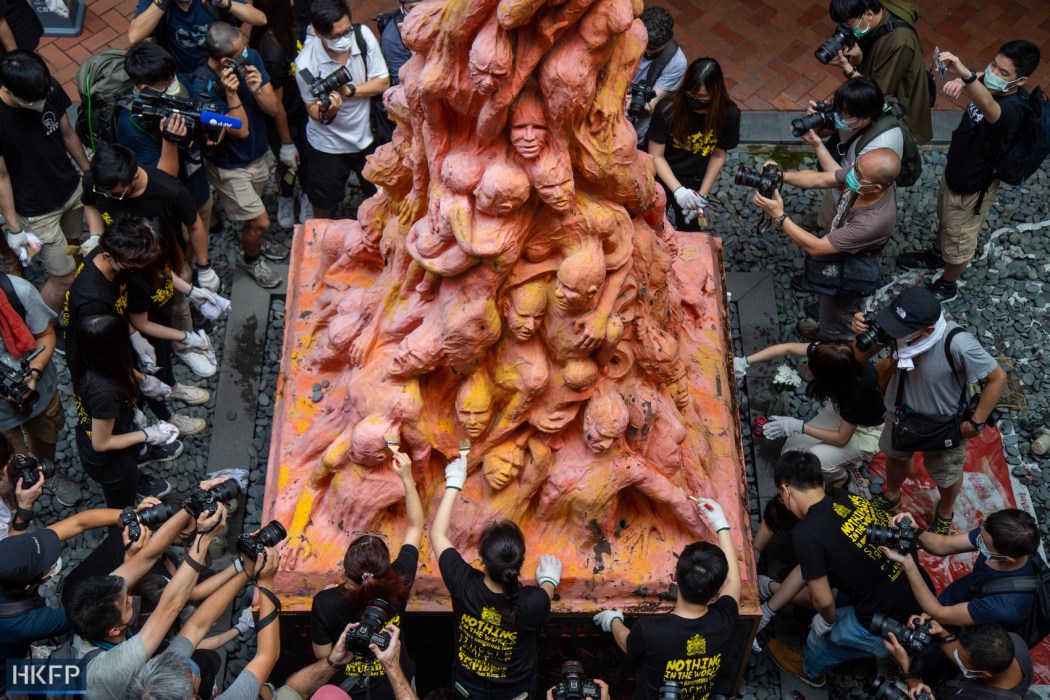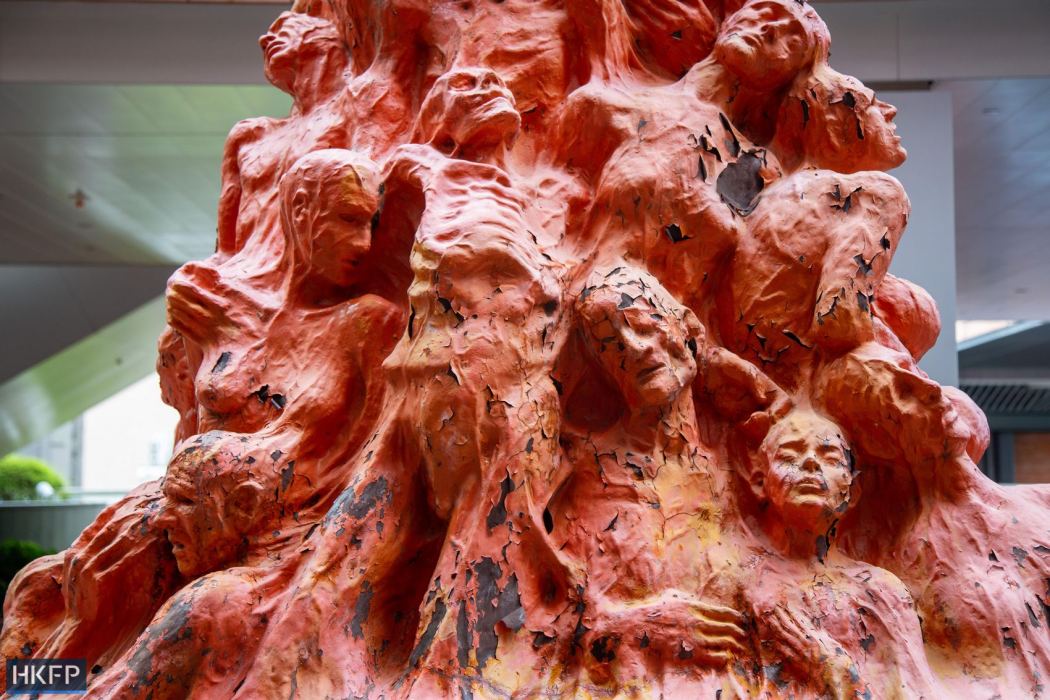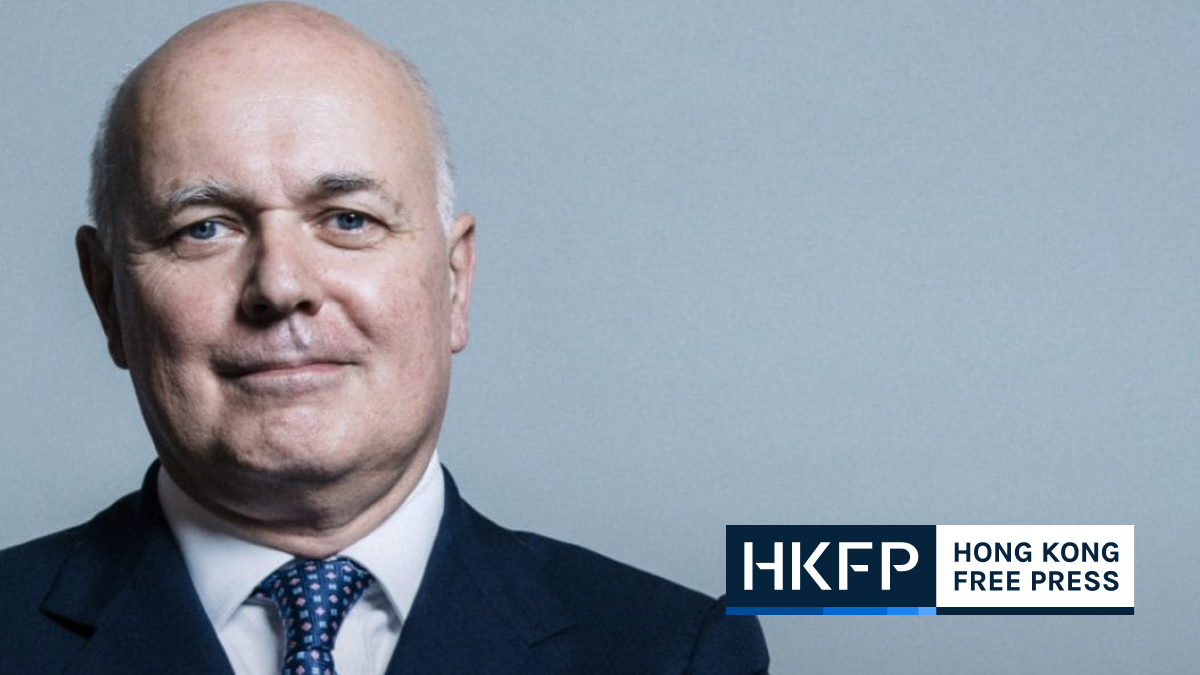The Danish artist behind an artwork which pays tribute to victims of the 1989 Tiananmen Massacre has urged the University of Hong Kong to let it remain on campus, amid rumours it will be removed.
The eight-metre tall harrowing monument to those killed by the military during the bloody crackdown has stood on the campus for 24 years. But rumours have swirled in recent days that university authorities plan to remove the statue. Management declined to comment, and ignored questions over whether they will let it stay indefinitely.

In a press statement on Monday, Jens Galschiøt – the original artist – said he was “shocked” to hear news of any plans to “desecrate” the sculpture: “I would like to remind the University of Hong Kong that the ‘Pillar of Shame’ is a shrine in the memory of the Tiananmen Square crackdown, where peaceful demonstrators were killed for expressing their wishes for political participation and the right to be a part of the decision process that determines their future and the future of China.”
“To remove and desecrate a memorial erected in the honour of the dead is by all standards sacrilege,” he added.

The Tiananmen Massacre on June 4, 1989 ended months of student-led demonstrations in China. It is estimated that hundreds, perhaps thousands, of people died when the People’s Liberation Army was deployed to crack down on protesters in Beijing.
The now-defunct Hong Kong Alliance in Support of Patriotic Democratic Movements of China received the artwork in 1997 as a gift. It voted last month to disband after a crackdown under the national security law saw its leadership arrested and charged, and its property frozen.
‘A sculptural outcry’
Students and activists traditionally carried out an annual washing of the Pillar of Shame to pay tribute to those who lost their lives during Beijing’s crackdown.

Galschiøt – who was denied entry to Hong Kong in 2008 – urged the university to allow the statue to remain. He said that he wished the world would “remember history as it happened, and to help raise a wave of protests against the removal of this unique memorial that has been standing in Hong Kong unfettered for 24 years.”
See also: The Pillar of Shame: The history of Hong Kong’s harrowing tribute to the Tiananmen massacre victims
“The ‘Pillar of Shame’ is a sculptural outcry from an artist with the right to say what he likes, to people who risk their lives for making use of the same right.”
There is debate over who may own the statue. Democrat Richard Tsoi told HKFP this week that, although the ownership of the artwork is unclear, the university had sought the Alliance’s permission and consulted with the group when the pillar was relocated within the campus a decade ago. Meanwhile, Galschiøt told HKFP on Tuesday that it belonged to him but was “lent to the students of Hong Kong’s university for permanent placement.”
He said that it belongs on Chinese soil – but, if it is at risk of removal, he will campaign to ensure it has “political asylum” at an art museum.
On Tuesday, Chief Executive Carrie Lam claimed artistic expression was safeguarded in Hong Kong: “Under the Basic Law, rights and freedoms of individuals are being safeguarded… including artistic freedom and academic freedom.” She added she would not get involved in the debate over the statue.
‘Risk management’
The university would not directly say whether it had plans to remove the sculpture. “The University will review risk management measures and facility usage on campus from time to time, and will not respond to speculative reports, ” a spokesperson told HKFP on Monday.
Earlier this year, the university cut ties with its student union, which supported the 2019 pro-democracy protests, citing “legal risks.” It has since pulled down pro-democracy displays from its campus, and urged its students not to tarnish the school’s reputation.
Four of its students have been arrested and charged with “advocating terrorism” under the national security law after the union passed a declaration expressing sympathy with a man who committed suicide after stabbing a police officer. The union retracted the motion and its leadership stepped down shortly afterwards, but it still sparked anger.
Support HKFP | Policies & Ethics | Error/typo? | Contact Us | Newsletter | Transparency & Annual Report | Apps
Help safeguard press freedom & keep HKFP free for all readers by supporting our team

LATEST FROM HKFP
HKFP has an impartial stance, transparent funding, and balanced coverage guided by an Ethics Code and Corrections Policy.
Support press freedom & help us surpass 1,000 monthly Patrons: 100% independent, governed by an ethics code & not-for-profit.












